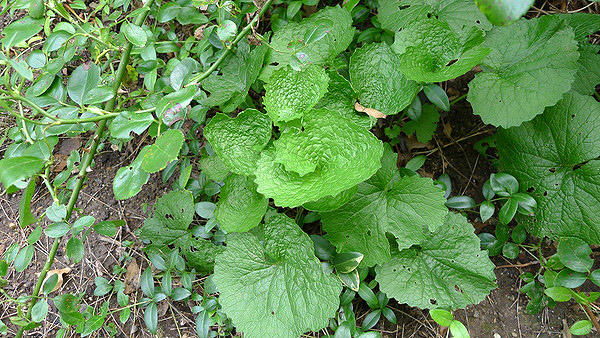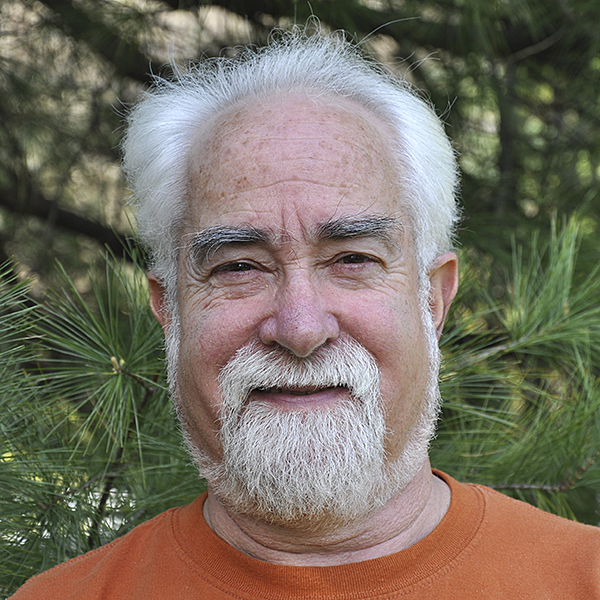

Weeds are everywhere. And as any gardener can tell you, they thrive with or without water.
Any patch of bare ground will become quickly populated with some weedy plants. The fact is that huge quantities of weed seed are found in all soil—from the top down to a depth of 6- to 7 inches. At any given time about one weed seed is ready to germinate and start growth for each square inch of soil. Many weed seeds can stay alive, but dormant, in the soil for many, many years.
I recently read that due to the tenacity of weeds, one of the ways our agricultural crops could survive hotter, drier summers would be to breed these crops with weeds. Most seem to thrive in the hottest and driest times of the summer and the seeds seem to lie in wait, being completely opportunistic, just waiting for that bare spot in the lawn or tiny bit of moisture in the driveway to spark them to life.
The summer of 2012 has been a banner time for weeds and their survival patterns. The super warm days of late winter and early spring, along with the ample moisture that we’ve had here on the East End, gave perennial weeds, such as dandelions, quite a lot of opportunity. They were a little late to bloom but when they did they were lush and the resulting crop of seeds will result in another banner crop of new plants this fall and next spring.
On the other hand we have crabgrass. Its establishment was delayed by the cooler weather in later spring but the soil moisture and warming soil temperatures finally gave the crabgrass seeds their signal and they took off like, well, weeds.
Ah, but as if that wasn’t enough it got sunny and hot and we went for weeks without appreciable rain. Even lawns with irrigation started showing dry spots and here and there you’d see a spot die out and there, right on the edge or smack in the center, would be a thriving crabgrass plant.
It all hit home on my lawn two weeks ago. My driveway isn’t paved so if I don’t keep the weeds at bay they can actually destroy the roadway and spread to the lawn. This year the lawn got so dry that it began to brown and thin at the edge of the drive and in no time I had crabgrass plants popping up all along the edge, growing in pure gravel and grit.
The challenge has been to kill every single crabgrass plant before it set seed. Plants that survive can result in hundreds to thousands returning next year distributed by animals, wind, the lawn mower and splashing rain.
Weed seeds get into the soil by a variety of means. Some spread from parent plants that may have become established in part of the lawn. Some blow in or are brought in by birds and other animals that cross the lawn. Some wash in from other areas as water drains across the landscape.
Very few weed seeds come in with lawn grass seed as only the least expensive blends and mixtures are weed seed-contaminated and even these are relatively clean compared with what you can find in the soil. When you’re buying lawn grass seed, read the label to be certain of this as weed content must, by law, be listed. Also consider that a tiny amount or percentage of weed seed in a turf grass box or bag can mean problems in no time.
Once the weed seed is in the lawn itself, it works its way into the soil through the activity of worms, insects and mechanical means caused by us. Some seed is carried into the soil as water moves down through cracks and other channels. There the seed waits for conditions to become right for germination and growth.
Because of the large reservoir of weed seed in the soil, weeds are a constant threat. At any time lawn grasses become weakened so that vigor is lost, there is a potential opening for some weed. This summer, if you had a grub invasion and the turf was thinned out, the weeds are just sitting there itching to see the light and germinate.
As long as a healthy grass plant is taking up space, weeds cannot get a start. Let that grass plant become diseased or weakened by insects or by malnourishment and the weed seedling has an advantage. Also, lawn grasses that are weakened by high temperature and drought in the summer and cold induced dormancy in the winter are left vulnerable to weed encroachment.
Most weeds become established in later winter and early spring. Then they start to thrive again in late summer and early autumn when lawn grasses are characteristically less dense and less competitive. This is why weed killers used now and in the spring are effective in preventing the further spread of troublesome weeds, but by the same token you don’t want to use herbicides when it’s extremely hot.
There are best and worst times to attack weeds. When you see a weedy lawn, what does it tell you? Well, there are several possibilities.
A weedy lawn may mean that the folks in charge don’t care and have just let it become run down. On the other hand, it may mean that the lawn is receiving so much tender loving care that the lawn grasses are weakened by overwatering, too much fertilizer and excessive use of pesticides.
A weedy lawn may also mean that the wrong turf grasses are being used, as poorly adapted lawn grasses are usually prone to weed infestations. Or it may mean that the right lawn grasses are in the lawn but varieties that are insect- and disease susceptible were planted.
A weedy lawn may mean that it is being mowed so close that the grasses can’t survive. Or it may mean that the lawn is overused—so much play and traffic that the soil is compacted so only weeds can grow.
Yet another reason is that the soil is unfavorable for growth of lawn grasses; as in too sandy a soil. It could mean that there is too much shade or that the wrong grass was used for the shady area. And finally, a weedy lawn may have to do with your neighbor’s lawn.
These eight conditions are responsible for most weedy lawns. It is evident that there are at least eight corrective measures necessary before the use of weed killers is considered. Why kill out weeds when they’re only going to return because the turf is thin?
Next week, the self-weeding lawn and the newest weeds on the block. Keep growing.
 More Posts from Andrew Messinger
More Posts from Andrew Messinger